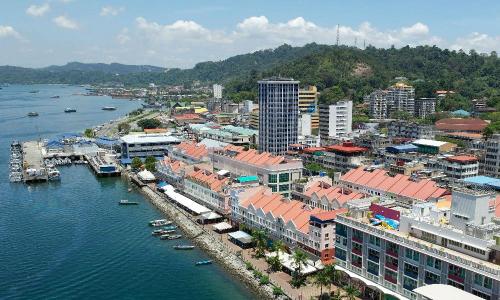What happens to Sabah when oil royalties run out?
LETTER | In the 2019 budget speech, Sabah Chief Minister Mohad Shafie Apdal unveiled a thrust for a green economy.
The RM4.27billion budget is optimistic in creating more jobs, something that Sabah sorely needs, and developing downstream industries.
RM1.6 billion of this budget is to come from oil royalties, and the remainder from crude palm oil tax and timber royalty.
While we applaud Shafie’s focus on a sustainable economy, the fact that almost 40 percent of the budget allocation comes from oil royalties is something we should be concerned about for the sake of sustainability itself.
But the Economic Affairs Ministry has stated that the oil and gas reserves will be depleted by 2029 – in ten years. Alternative, sustainable routes of funding should be seeded right now for the future of Sabah.
In line with this, the chief minister has gone to China and signed RM20 billion in agreements. This would be the ideal thing to do in terms of trying to spur development, but in hindsight, is this the right thing to do, knowing China investors and the debt trap issue that invariably affect the countries involved in big business deals with China?
Countries like Sri Lanka, South Africa, Zambia, Laos, and Tonga have all received investment loans from China only to find themselves giving much more than money to pay off these debts.
Knowing that the state of Sabah is currently facing high unemployment rates, we can understand the challenges the state is facing in trying to solve this issue.
Last year, Sabah recorded the highest number of unemployed graduates in the country, and their pleas for employment were so intense that it caused an assemblyperson, Jenifer Lasimbang, to lash out on Facebook, stating that she was sick and tired of graduates and their parents pestering her for jobs.
Unfortunately for the assemblyperson, it remains the state’s responsibility to encourage employment growth.
But taking all that into account, we have to question the strategy being put into place currently.
Yes, it may seem to be the best short-term measure when the money comes in. But in the long-term, will it work?
From the East Coast Rail Link project, we know that a typical demand for Chinese projects around the world is to use China contractors for every aspect of work.
From the actual work right down to the tea lady, including the food supplies are likely to be China contractors hired by the China investor. Workers are likely to be shipped in from China to keep costs down.
Where does this leave the locals? Where does this leave the local economy?
Local companies such as the country’s national oil company bring other benefits to areas that they carry out projects in – schools are built, roads are developed, new infrastructure is established, charitable works are carried out.
The state can resolve these issues by embarking on strategic green economy projects, as highlighted by Shafie.
He stated that the state would pursue projects that catered to both the need for conservation as well as the need for development in its pursuit of a green economy.
This included putting into place policies that would help address global warming.
Buzzwords surrounding the green agenda relate mostly to the greening of the economy: sustainability, biosustainability, circular economy, biotechnology hubs.
All these can easily apply to Sabah. There is vast potential in its forests, despite the pillaging of the previous government, and our future should look in this direction. We have all the tools that are necessary to support ourselves right here.
For example, Sabah can look into developing a bio hub as was done in Finland. A local company will be building a bioproduct mill that includes the largest wood processing unit in the Northern hemisphere, and everything is built with 100 percent utilisation of wood raw material, and the mill itself will generate bioenergy.
On top of all that, the investments in this project would amount to RM7.99 billion, and increase Finland’s annual income by approximately RM2.82 billion.
Instead of looking towards a foreign country and foreign investment, the state can identify capable local investors who would be able to participate in and contribute to Sabah’s future growth strategies by capitalising on the existing natural resources.
Local investors would be more respectful of our need to care and conserve the forests, as they will be beholden to the state’s laws – unlike international companies, whose involvement could result in the state being mired in controversy when illegal logging and other illicit forest-related activities occur without an answerable culprit.
At the end of the day, Sabah has to move away from the dependency on oil royalties, and as for now, there is no concrete plan when it comes to that. We can only wait and see with the new green budget agenda.
The views expressed here are those of the author/contributor and do not necessarily represent the views of Malaysiakini.
RM12.50 / month
- Unlimited access to award-winning journalism
- Comment and share your opinions on all our articles
- Gift interesting stories to your friends
- Tax deductable
